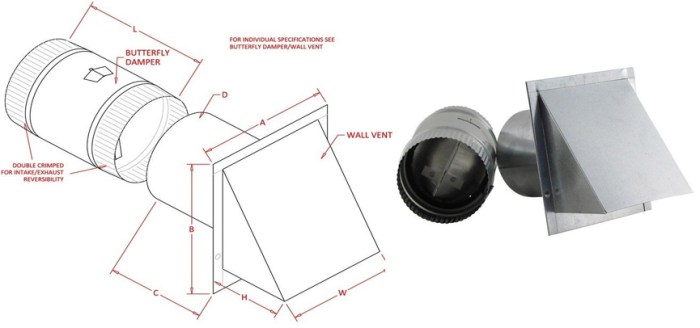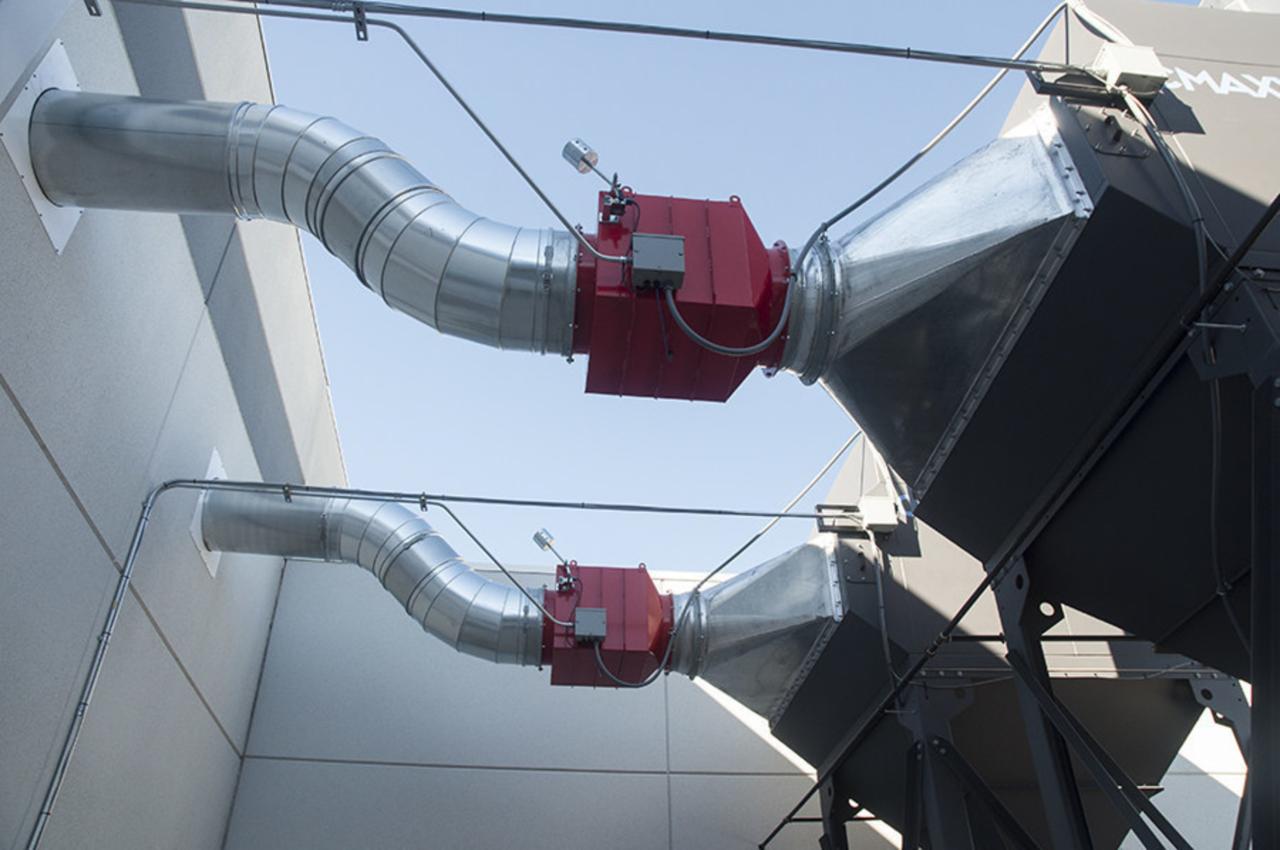Backdraft dampers play a crucial role in the efficient and safe operation of exhaust fans. They are designed to prevent air from flowing back into a building when the fan is turned off, ensuring optimal performance and protecting against potential hazards.
This guide will delve into the significance of backdraft dampers in exhaust fans, exploring their types, installation, maintenance, and safety considerations.
Understanding the importance of backdraft dampers is essential for ensuring proper ventilation, energy efficiency, and the overall safety of buildings. By providing insights into their functionality, benefits, and best practices, this guide aims to empower readers with the knowledge to make informed decisions regarding exhaust fan systems.
Importance of Backdraft Dampers in Exhaust Fans
Backdraft dampers are essential components of exhaust fans, playing a crucial role in maintaining indoor air quality and preventing backdrafts.
Purpose of Backdraft Dampers
Backdraft dampers are installed in exhaust fans to prevent air from flowing back into the room when the fan is not operating. When the fan is turned on, the damper opens, allowing air to be expelled from the room. When the fan is turned off, the damper closes, preventing outside air from entering.
Benefits of Backdraft Dampers
- Prevents Backdrafts: Backdraft dampers prevent outside air from entering the room when the fan is not operating, reducing the risk of backdrafts and the potential spread of harmful pollutants.
- Maintains Indoor Air Quality: By preventing outside air from entering, backdraft dampers help maintain indoor air quality, reducing the risk of exposure to harmful pollutants and allergens.
- Energy Efficiency: Backdraft dampers help prevent conditioned air from escaping when the fan is not operating, reducing energy consumption and lowering utility costs.
Applications of Backdraft Dampers
Backdraft dampers are essential in various applications, including:
- Bathrooms: To prevent moisture and odors from re-entering the bathroom after the exhaust fan is turned off.
- Kitchens: To prevent cooking odors and grease from re-entering the kitchen after the exhaust fan is turned off.
- Laundry Rooms: To prevent moisture and lint from re-entering the laundry room after the exhaust fan is turned off.
- Industrial Buildings: To prevent hazardous fumes and gases from re-entering the building after the exhaust fan is turned off.
Installation and Maintenance of Backdraft Dampers
Proper installation and maintenance of backdraft dampers are crucial for ensuring their optimal functionality and longevity.
Installation
- Choose a damper with the appropriate size and capacity for the exhaust fan.
- Install the damper in a vertical position, ensuring that the damper blade swings freely.
- Connect the damper to the exhaust fan ductwork using screws or bolts.
- Seal any gaps around the damper using duct tape or sealant.
Maintenance
Regular maintenance is essential to keep backdraft dampers operating smoothly.
- Inspect the damper regularly for any signs of damage or wear.
- Lubricate the damper blade and linkage with a light oil.
- Clean the damper blade and housing to remove any dirt or debris.
- Replace the damper if it becomes damaged or fails to operate properly.
Common Problems and Solutions
- Damper not closing properly: Check for obstructions, damaged blades, or misalignment.
- Damper making noise: Lubricate the damper blade and linkage.
- Damper not opening fully: Check for obstructions or a weak spring.
Safety Considerations
Backdraft dampers play a crucial role in ensuring the safety of exhaust systems. Without them, dangerous gases and fumes can backflow into occupied spaces, posing significant health and safety risks.Backdraft dampers are subject to various regulations and standards, including those established by the International Code Council (ICC) and the National Fire Protection Association (NFPA).
These regulations mandate the installation of backdraft dampers in specific applications, such as commercial kitchens, industrial facilities, and multi-family buildings.
Ensuring Safe Operation
To ensure the safe operation of backdraft dampers, it is essential to adhere to the following guidelines:
Regular maintenance and inspection
Backdraft dampers should be inspected and maintained regularly to ensure proper functionality. This includes checking for any damage, corrosion, or obstructions that could impede their operation.
Proper installation
Backdraft dampers must be installed correctly to prevent air leakage and ensure their effectiveness. The installation should be performed by qualified personnel in accordance with the manufacturer’s instructions.
Proper sizing
The size of the backdraft damper should be appropriate for the airflow rate of the exhaust system. An undersized damper will restrict airflow and create backpressure, while an oversized damper may not provide adequate protection against backdraft.
Emergency override
Backdraft dampers should be equipped with an emergency override mechanism that allows them to be manually opened in the event of a power failure or other emergency situation.
Summary
In conclusion, backdraft dampers are indispensable components of exhaust fan systems, offering a range of benefits that contribute to efficient ventilation, energy conservation, and safety. Understanding their importance and adhering to proper installation and maintenance practices are crucial for ensuring the optimal performance and longevity of exhaust fans.
By implementing backdraft dampers effectively, building owners and managers can create a healthier, more energy-efficient, and safer indoor environment.



